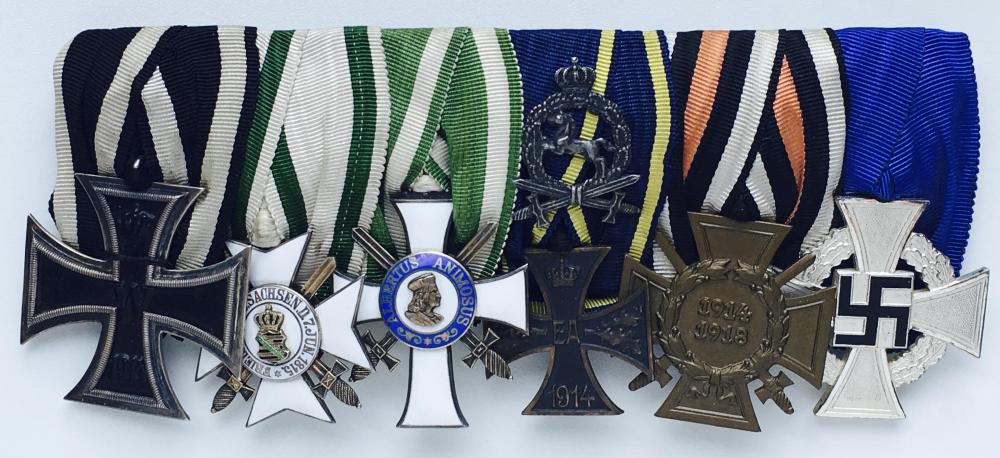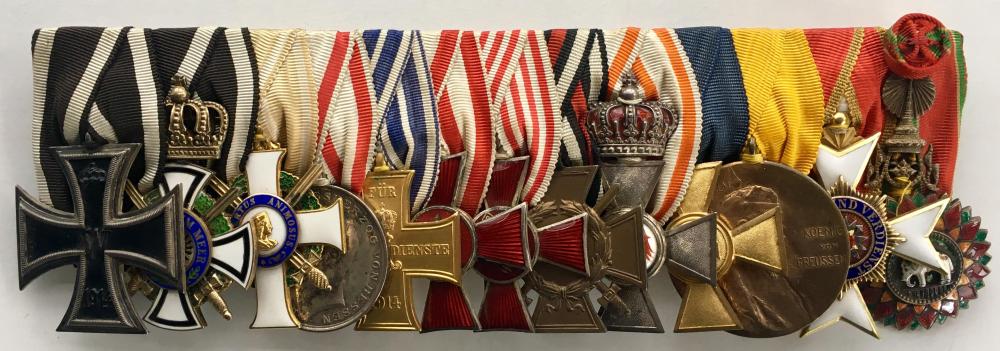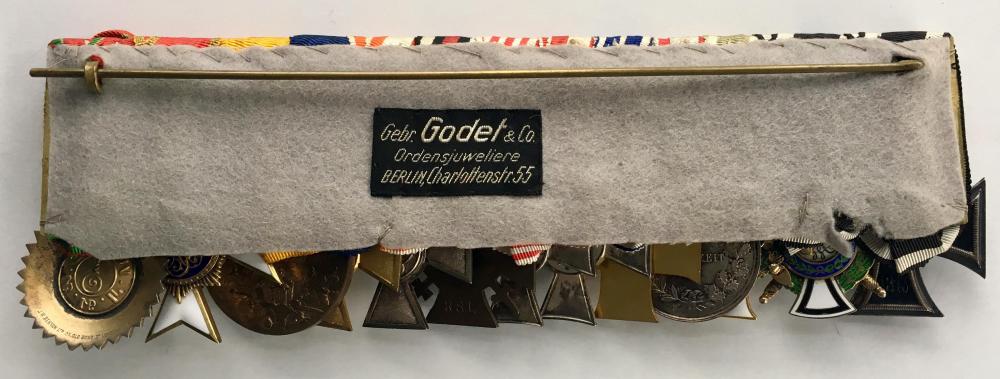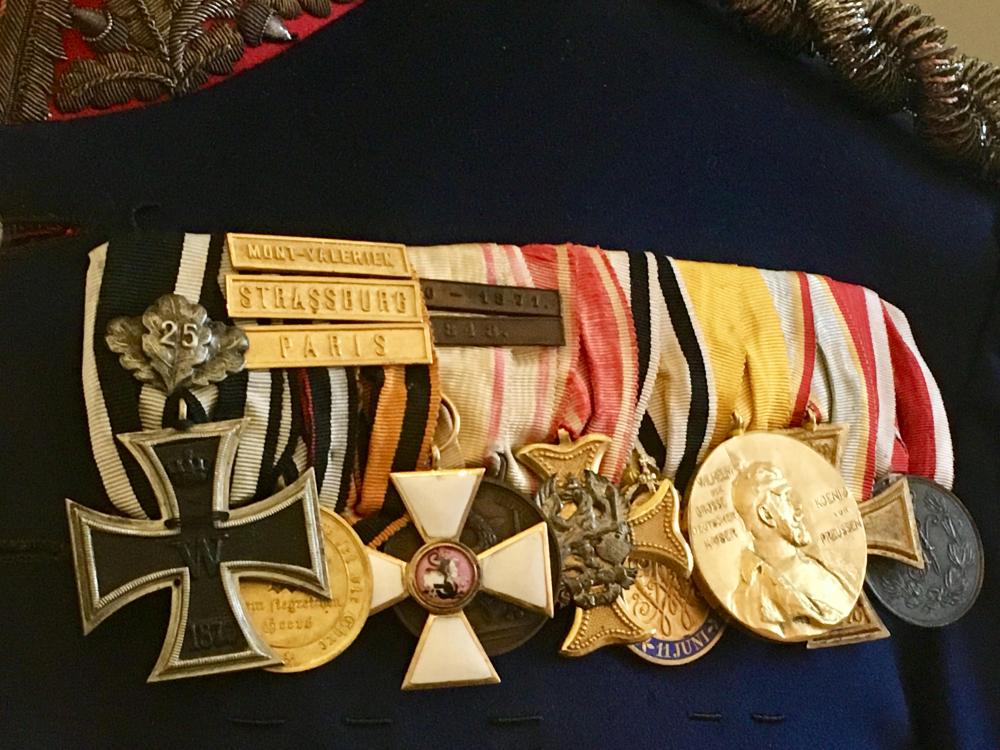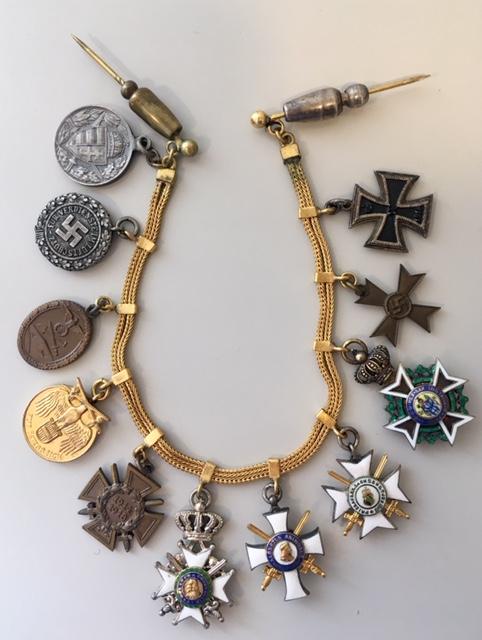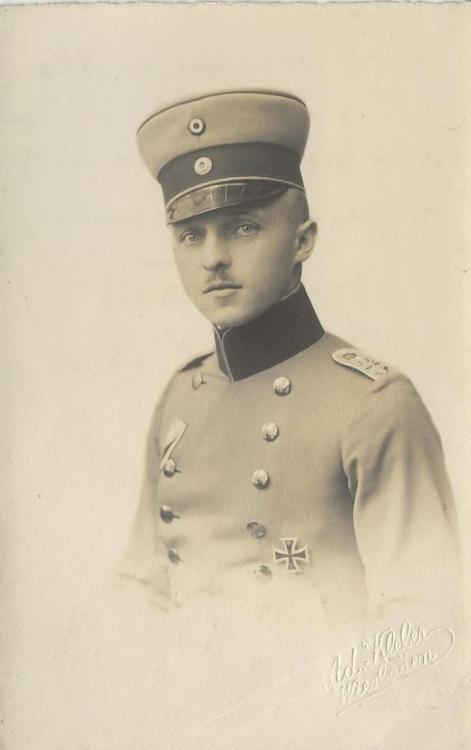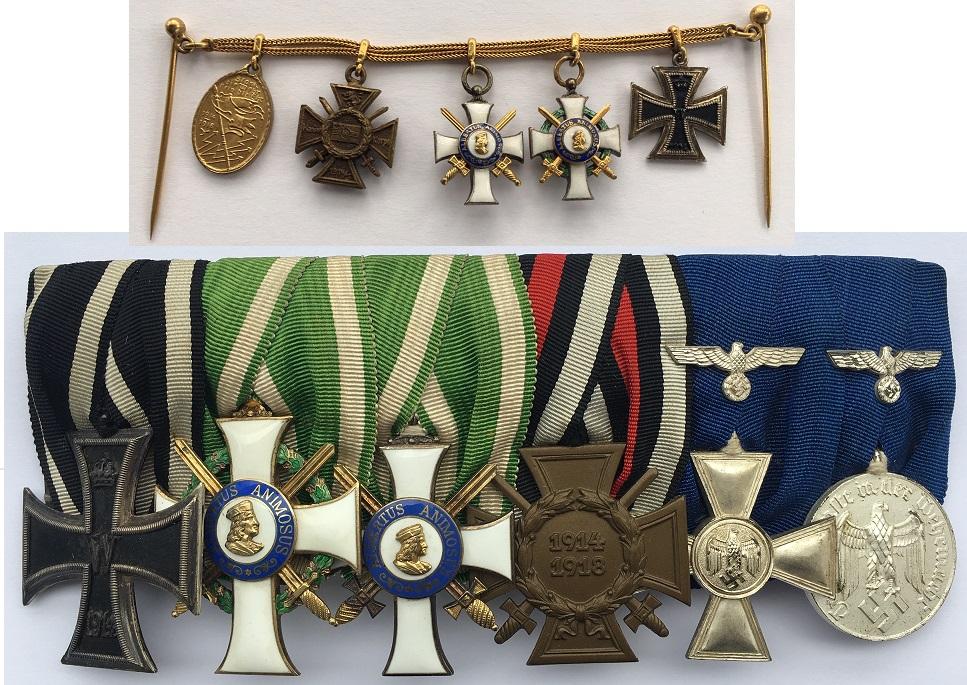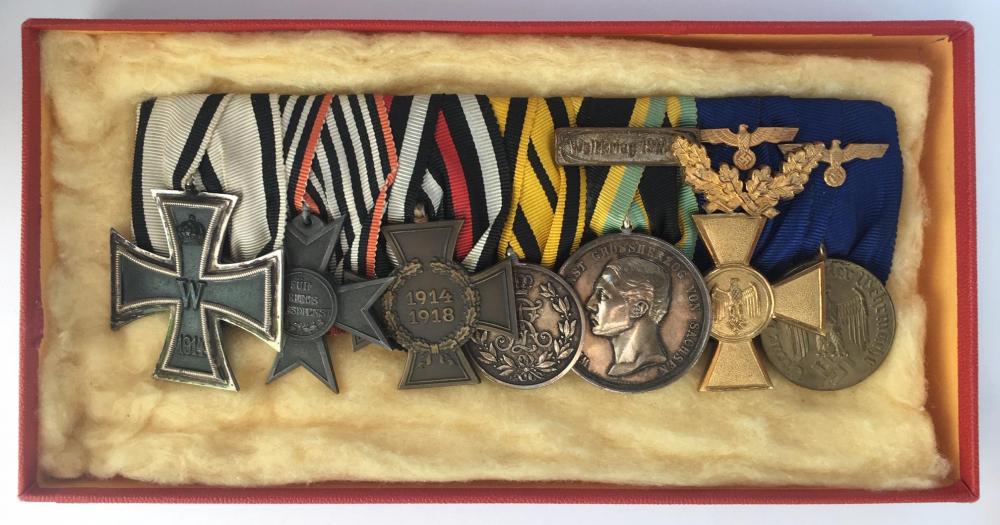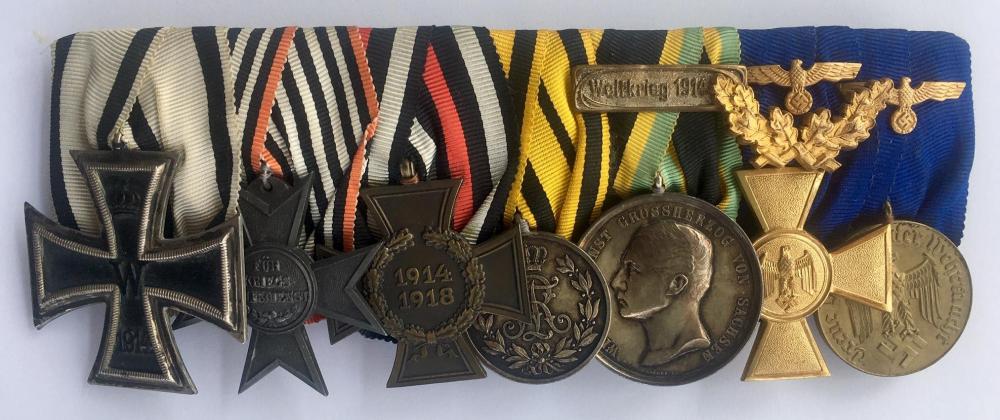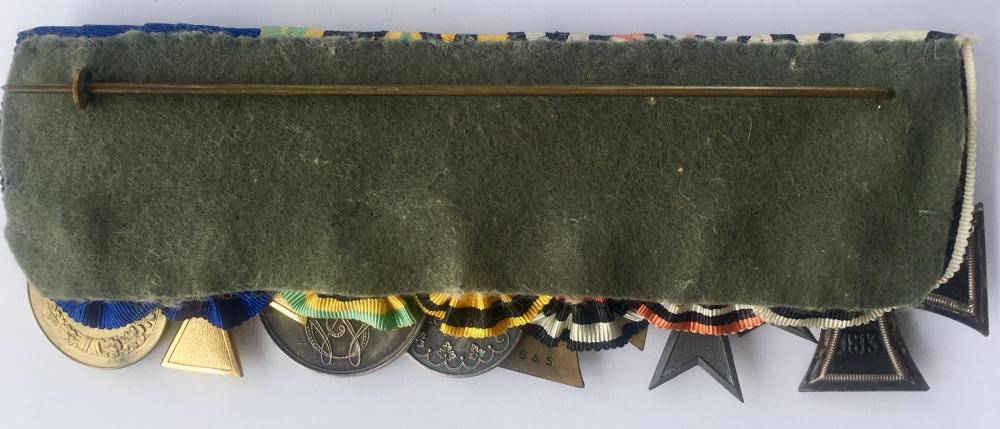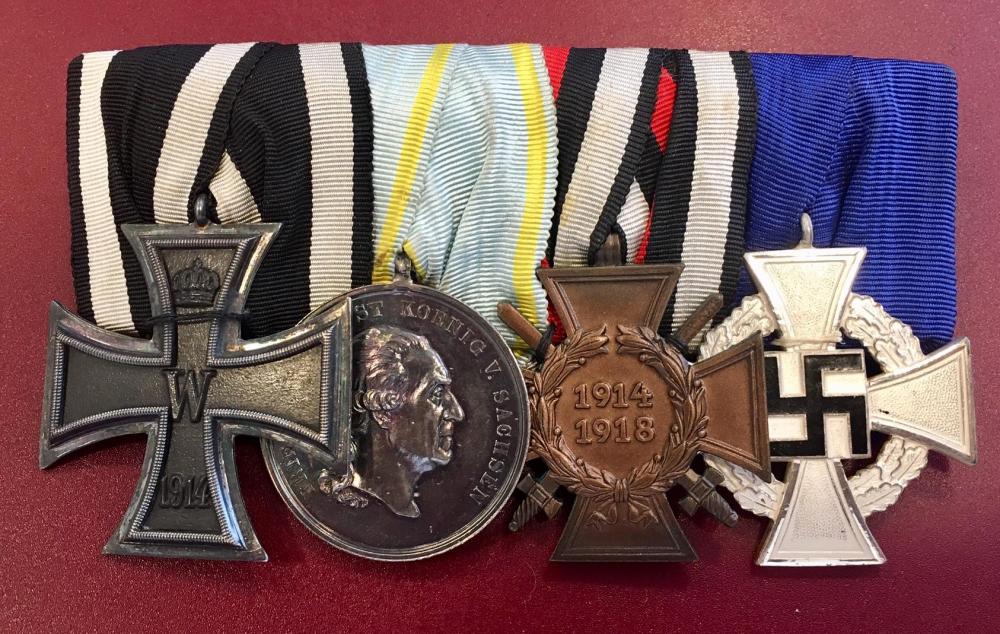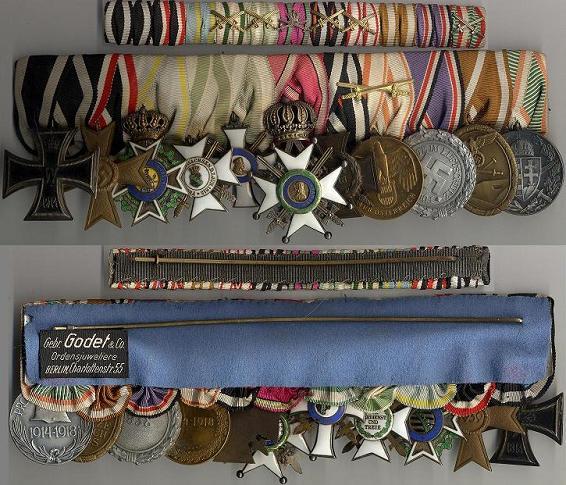-
Posts
2,868 -
Joined
-
Last visited
-
Days Won
20
Content Type
Profiles
Forums
Blogs
Gallery
Events
Store
Everything posted by Claudio
-
Dear Komtur!!!! Wooooooooooooooooow! That was such a wonderful surprise to read your message today early in the morning. After so many years a name, face and history behind a tuxedo medal bar has been finally found. That is so cool; even more because the wearer was such an elusive and rather unknown middle-rank harbor civilian official . Many many thanks to your extraordinary research work; not even the poor Rick Lundstrom (RIP) could unfortunately find him... you have beaten the master! Although, I think that given the research possibilities of today, Rick could have given to the collecting and researching community of German Imperial orders so much more, if he had lived longer... Thanks again Komtur! ????
-
Well, actually all this orders were given very likely for his connections with Schaumburg-Lippe rather than real merit (he got also the Treu und Dienste Cross almost in the end of ww1). Strangely enough his SL3 wasn’t upgraded with swords... Furthermore the Siamese (Thai) order was probably given whilst receiving a visit of Siamese officers or Royal family members who participated to some kind of Pionier military maneuvers or workshop pre 1914. So all in all his connections helped boasting his array of decorations on his bar, more than some mere mortal Infantry officer at the front....? I have some beautiful and long bars which belonged to officers that haven’t even reached higher ranks than Major or Oberstleutnant, but they were able to get more exotic orders than even Generals, not to mention front officers! C
-
Dear forumites, I'd like to present to you my latest acquisition: the medalbar (plus EK1 1914) of Oberstleutnant a.D. Wichard. Here are some infos about the orders on the bar and other infos about his career: Preußen Eisernes Kreuz 2. Kl. am Kämpferband 1914 (OEK 1909), E gs/S; Preußen, Hausorden von Hohenzollern, RK mit Schwertern, S&W gepunzt (OEK 1789), S em ; Sachsen Königreich, Albrechtsorden, 2. Modell (1876-1918), RK 1. Kl. mit Schwertern, das Kreuz in Gold S vg Schwertern nachgerüstet (OEK 2209), S/G em; Hessen, Allg. EZ, Ernst Ludwig, Für Tapferkeit (OEK 884), S; Schaumburg-Lippe, Kreuz für treue Dienste 1914 (OEK 1256), Br vg; Hamburg, Hanseatenkreuz (OEK 688), Ku vs em; Bremen, Hanseatenkreuz (OEK 651), Ku vs em; 3. Reich (1933-45), Ehrenkreuz für Frontkämpfer (OEK 3803/1), E br; Preußen, RAO, 4. Modell (1885-1918) 4. Kl. mit Kr.(OEK 1706), S em; Preußen, Offiziers Dienstauszeichnung für 25 Jahre (OEK ); Preußen, DA f. Offiziere 1825, 4. Form ab 1895 (OEK 1970/1), Br vg; Schaumburg-Lippe, Fürstlicher Hausorden, Kreuz 3.Klasse (OEK 1211), G; Siam, Königreich: Der sehr hohe Orden des Weißen Elefanten, 4. Modell, Offizierskreuz (1889-1941). I would really appreciate if someone could give me the exact dates and places of both birth and death of this officer or other filling informations about his career and dates of the medals' bestowal (possible corrections). Thank you a lot in advance for your comments or input on this one. Sincerely, Claudio Wichard Winkelmann wurde mit Patent vom 18.4.1893 zum Leutnant ernannt und war von 1895 bis 1901 im Pionier-Btl. von Rauch (Brandenbg.) Nr. 3 tätig. Über einen kurzen Aufenthalt bei der Artillerie und der Ingenieur-Schule kam er 1902 zur 4. Ing.-Insp., die u.a. für den Fortifikationsdienst in Mainz tätig. Während des Weltkrieges war er Kommandeur des Pionier-Bataillons Nr. 211. 18.04.1883 Leutnant 1895-1901 Pionier-Btl. v.Rauch (Brandenbg.) Nr. 3 1897 k.z. Artillerie und Ingenieur-Schule 15.12.1900 Oberleutnant 1902 4. Ing.-Insp., k.z. Fortifikationsdienst in Mainz 1904/1905 Westfälisches Pion.-Btl. Nr. 7 1906/1911 Hannoversches Pion.-Btl. Nr. 10 27.01.1907 Hauptmann 1912 4. Ing.-Insp., k.z. Fortifikationsdienst in Köln 1913/1914 2. Ing.-Insp., b.Stabe der Festtungsinspektion Im Kriege zwischenzeitlich Kdr des Pion.-Btl. Nr. 21 18.04.1916 Major Erl 1926 Oberstleutnant a.D. (St.O.Pi 157) Orden & Ehrenzeichen : 1. 1897 Zentenarmedaille 2. Okt. 1907 Fürstl. Schaumburg-Lippischer Hausorden 3. Klasse 3. 1907/08 Kgl. Siamesischer Elefantenorden Offizierskreuz 4. 27.01.1909 Kgl. Preuß. RAO 4. Kl. m.d.Krone 5. Ende 1914 EK II 6. Febr. 1915 EK I 7. 09.10.1915 Kgl.Sächs.Albrechtsorden RK 1. Kl. m.Schwertern 8. Okt. 1916 Hamburger Hanseatenkreuz 9. Nov. 1916 Hess.Allg.EZ für Tapferkeit 10. 18.12.1917 Kgl. Preuß.HO von Hohenzollern, RK m.Schwertern 11. Jan. 1918 Bremer Hanseatenkreuz 12. Mai 1918 Schaumburg-Lippisches Kreuz für treue Dienste 1914 13. Dez. 1920 (!) Preuß.Offz.-Dienstauszeichung 14. 1934 Ehrenkreuz für Frontkämpfer
-
Dear forumites! Is it possible to identify this junior officer? It appears to be an Oberleutnant (1 pip/star) of the 12th (Bavarian?) regiment... I can read in German: "schnell schwand die Zeit unseres Zusammenseins aber - sie war schön - ! Zu ??? Kameradschaft, signed Othmar ??? dated 2.3.16 Thank you in advance for your inputs. Cheers, Claudio
-

Luftwaffe Ribbon Bar of Erhard Milch
Claudio replied to Alexandre's topic in Wehrmacht Medals, Decorations & Awards
Yes indeed!


